QuestionHi, my grandmother recently passed away, and I inherited her three dogs. She never taught them any basic behaviors and manners when they were young, and I'd like to at least get them to a point at which they listen to a few basic commands. The oldest one if a ten year old chow/German shepherd mix, and she's the better behaved of the two. She walks absolutely perfectly on leash, and I've gotten her to sit on command. However, she refuses to lay down. I've tried guiding her into it with a treat, but it doesn't seem to be working. She's also a very bad car chaser. The second one is an eight year old beagle mix male, and he's a bit more difficult. I haven't even been able to teach him to sit, and he adamantly refuses to walk on a leash. The youngest is a five-year-old lab, and he knows all the basic behaviors, but is a horrible puller on walks. Can you help me to train them?
AnswerCongratulations on being a wonderful grandchild, and my condolences on the loss of your grandmother, who obviously thought very highly of you and entrusted you with her three loved dogs.
The old adage, "You can't teach an old dog new tricks" is not true, however the older the dog, the more persistent some of its behaviors and the slower to adapt to new ones. The ten year old will not "lie down" because it is a very submissive posture and your training method is most likely at fault here. The "trick" to training is to capture a natural behavior and then reward the dog's CHOICE. All three dogs can be trained (separately from one another) using positive reinforcement with a cue, and that's the clicker. Go to ClickerTraining.com and purchase a clicker and a primer on how to "charge" it and use it to teach behaviors. This method is used by marine mammal trainers to capture behaviors of Dolphin, Orca, etc., who learn that this captured behavior will BE REWARDED for repetition to a cue (that's a "command"). DO NOT USE normal words because most dogs have developed persistent refusal to commands of "sit", "down", "come", etc. Make up new words and teach the same word to all dogs, separately and in short sessions. The "down" can be captured by click/rewarding even the slightest 'bow' behavior and then slowly "shaping" it to a complete "down", without a more confident dog's natural disinclination to offer this posture. This method of training involves NO standing over, no direct eye contact, NO show of dominance on the part of the trainer. Essentially, the dog CHOOSES to perform and then learns that this choice (cooperation) is rewarded. The Beagle can be taught to move forward on leash with the clicker, after learning one simple behavior (like "sit") and learning that the click IS WONDERFUL. First, work on basics, then introduce a leash and walk BACKWARD away from the dog to the end of the leash, turn your back but observe the dog and the moment he comes toward you (and he will), click/treat. Do this often enough (and with increasing distance) and you will soon be able to go FORWARD. Do this indoors (do all training indoors at first), and then go outdoors and expect to have to go back to basics for the first session or two. He will learn that following the leash (VOLUNTARILY) will earn reward. The Lab may need a Halti (and a leash for the halti, do not lead a dog by the nose). Here's a link:
http://www.drsfostersmith.com/product/prod_display.cfm?pcatid=875
Here's how to train the dog to wear the Halti:
Purchase a Halti head collar and teach the dog to wear it: as you put it on at home, feed him tiny bits of cheese or chicken frank. Repeat this several times a day over the course of a few days until he anticipates the head collar and reward, then take him outdoors with TWO leashes: one on his martingale collar and one for the HEAD COLLAR separately. Keep your left hand lightly at the middle of the head collar leash while holding both in your right hand. DO NOT LEAD THE DOG BY THE HEAD COLLAR, this is frightening to a dog and can harm him physiologically. Go into your yard and do some exercises with the dog: walk in wide circle, then abruptly walk in a circle in the other direction. Each time you plan to change direction, say, "Come along" and use the head collar GENTLY to turn the dog's head in the new direction, then pop a treat into his mouth the moment he turns. Keep walking in circles for a few minutes with the "come along" phrase and the reward when the dog follows the head collar in the new direction. Then pretend there is a large, long ladder in front of you on the ground (or, if you have one, put it down.) Walk in a zig zag pattern as if you are passing through the rungs of the ladder, weaving in and out; at the "end" of the "ladder", turn back with your "come along", GENTLY using the head collar, and treat, then zig zag back. Then begin walking straight lines, occasionally doing an about face with "come along" and treat. As dogs perform complex behaviors, their cognition increases (there is a change in brain wave patterns); the dog will not be afraid, he will be attentive and LEARNING. When you are finished with this approximately 15 to 30 minute exercise, go in the house, praise the dog, take off the head collar.
Once the Lab has accepted the halti and learned to trust it and you, it will be impossible for him to pull you; when he tries, simply go in the opposite direction for a few feet and then turn back. When you take the opposite direction, use your "come along" signal. Once you go back in the original direction, click/treat his calm walking beside you (once). persist in this training over the course of several days and his pulling behavior should extinguish.
Regarding the car chasing, it's extremely difficult to redirect a strong prey drive response. Do not allow this dog off leash outdoors for any reason.

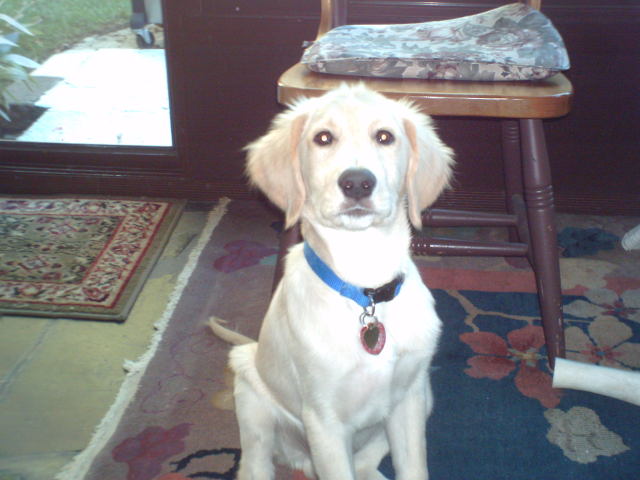 my 7 month old golden changed for the worse
QuestionRiley at 6 months
QUESTION: I got a gold
my 7 month old golden changed for the worse
QuestionRiley at 6 months
QUESTION: I got a gold
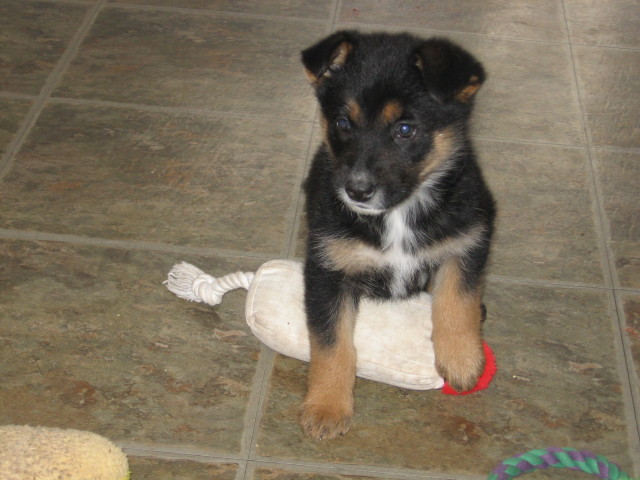 puppy problems
QuestionQUESTION: I am the proud owner of 2 german shep
puppy problems
QuestionQUESTION: I am the proud owner of 2 german shep
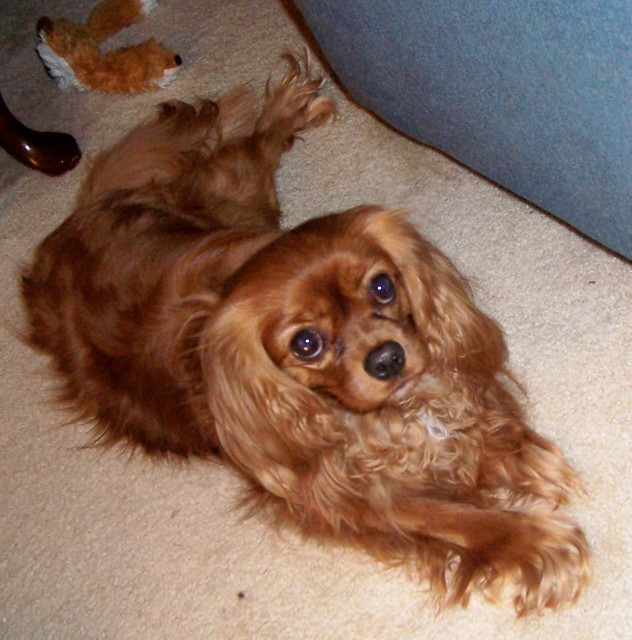 Dog light and shadow chasing
Question
Jenni
My 3 year old Cavalier King Charles Span
Dog light and shadow chasing
Question
Jenni
My 3 year old Cavalier King Charles Span
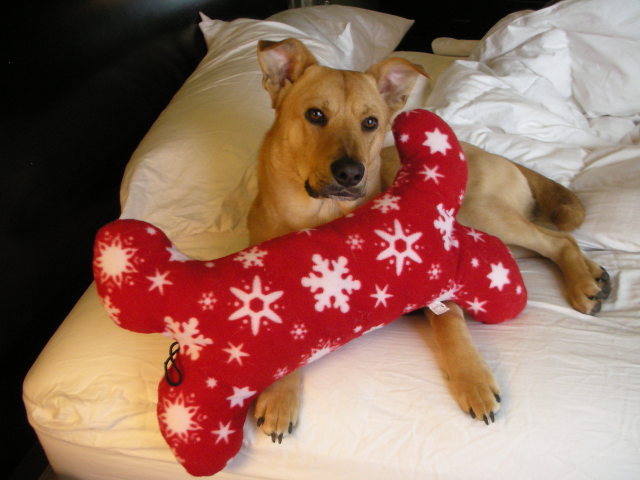 Very Scared Dog
Question
Happy
My dog is 17 months old and is a mixed b
Very Scared Dog
Question
Happy
My dog is 17 months old and is a mixed b
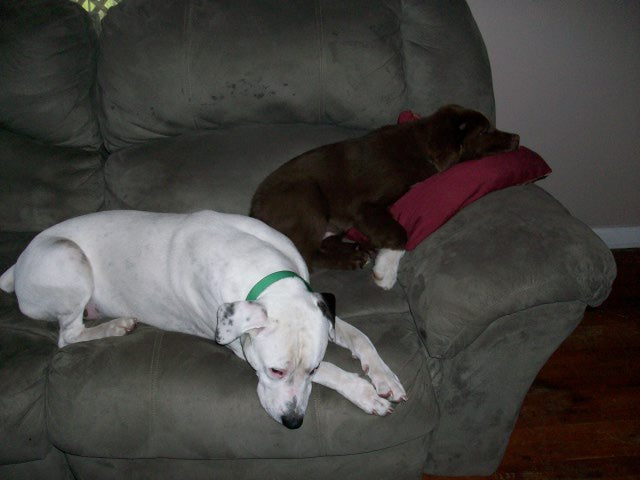 American Bulldog aggression
Question
Buddy and Rez
I have a 2 year old Ameri
American Bulldog aggression
Question
Buddy and Rez
I have a 2 year old Ameri